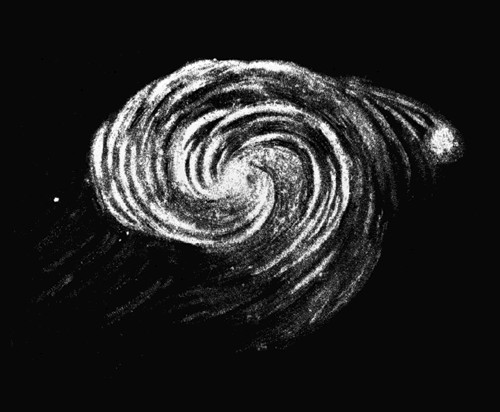What are spiral nebulae? How did they get their name?
1 Answer
Spiral Nebulae are objects that look like spiral shaped clouds which later were found to be galaxies themselves lying outside our milky-way galaxy.
Explanation:
Long before we knew about the existence galaxies other than ours, astronomers who built larger and larger telescopes discovered that the sky is filled with many nebulous objects. Construction of very large telescopes enabled astronomers to observe nebulous objects at higher resolutions and many of these nebulous objects were found to be spiral in shape.
The following picture is a 1845 AD charcoal diagram of a Spiral Nebula (M51) as drawn by astronomer and the 3rd Earl of Rosse, William Parsons who looked at these objects through his 72" telescope. Today this structure is known as the Whirlpool Galaxy

Astronomers had no way of knowing what these objects were. So there were speculations about what these objects could be. Astronomers were divided in their opinions between two camps. Astronomers belonging to one camp thought these (spiral nebulae) are objects inside our milkyway galaxy and the astronomers in the other camp thought these objects to be galaxies themselves lying outside the milkyway galaxy.
Confusion over the nature of spiral nebulae triggered a great debate between Harlow Shapley and Heber Curtis at the Harvard-Smithsonian Museum of Natural History on 26th April 1920. The Shapley-Curtis debate could not reach any conclusion.
But four years later, in November 1924, Edwin Hubble showed beyond any doubt that the Andromeda Spiral Nebula (M31) lies well outside the borders of milkyway galaxy. With the 100" Hooker Telescope at the Mount Wilson observatory he was able to find cepheid variables inside the Andromeda Spiral Nebula which enabled him to calculate its distance from us. Thus it was finally shown that spiral nebulae are (Island Universes) galaxies themselves that lie outside our own galaxy.
Note : Hooker telescope is indeed the real name of the telescope and I am not using an offensive language here. :)

